If you’re on this page, you probably already know how damaging moths can be. From contaminating food to destroying fabrics, moths can be a very frustrating pest to deal with. The good news is moth control is pretty simple. In this guide, I’m going to share how to get rid of moths using proven methods.
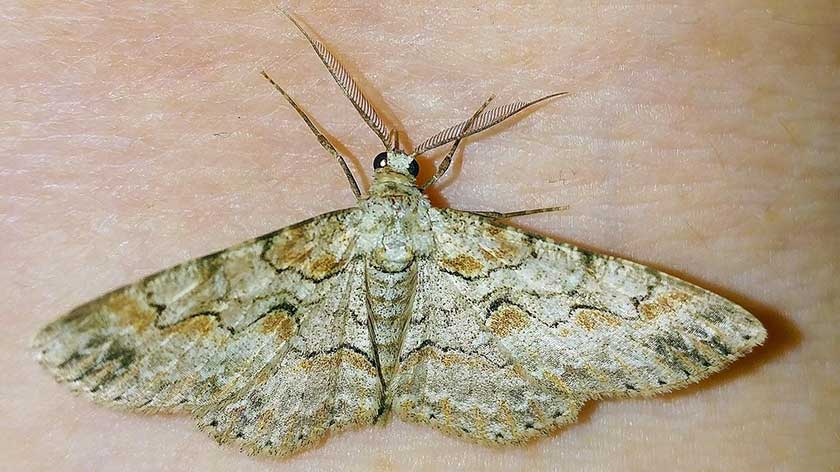
Moths can incredibly destructive, chewing their way through favorite clothing items, foods, carpets, and crops. So, naturally, if you have a moth issue in your home, you need an effective plan to get rid of them.
This guide will start with my favorite moth control products. If you want to learn more about the types of moths and understand. specific treatment techniques depending on the type of moth you’re dealing with, or useful facts about them, check out the guide below the list of products and methods.
Here are the Best Ways to Get Rid of Moths
In this section, we’re going to launch into some great mothball alternatives, everything from hanging lavender to vacuum-sealing your garment bags. These are methods you can try with items you likely have around the home, but there are also some inexpensive products you can buy online to get the job done.
1. Pheromone Attractant Insecticide Moth Glue Trap
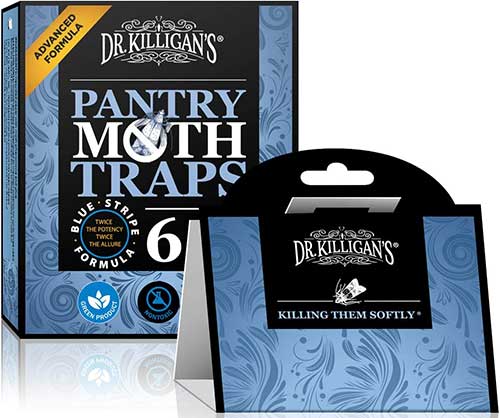
This product has received rave reviews from customers who use Dr. Killigan’s traps to protect stored dry goods such as pet food, flour, almonds, fruits, and bird seed. Since there are no wafers you need to add, setup is completely hassle-free. Just open the package, peel off the plastic sheet, fold it into a triangle, and you’re good to go!
Remember that tidbit about how moths use their antennae to seek out the pheromones of potential mates? Well, one company has put this to good use in creating a product that attracts, traps, and kills food moths.
If you have an ongoing issue with Indian meal moths or other food moth variety, this is a product worthy of your consideration. Dr. Killigan’s Premium Pantry Moth Traps with pheromone attractants are safe and non-toxic to humans.
2. Pantry Moth Glue Traps
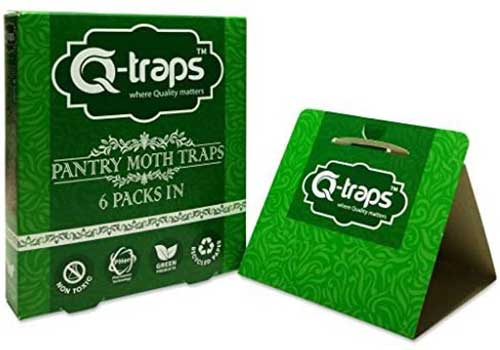
The Q-traps Pantry Moth Trap are made from recycled paper and come with a pre-baited glue. These traps are VERY effective and all-natural. They fold into a tent and can be literally set up in seconds. Keep in mind these are NOT effective for clothing moths but are very effective for pantry moths.
3. Hang Potent Lavender Bags Moth Deterrent
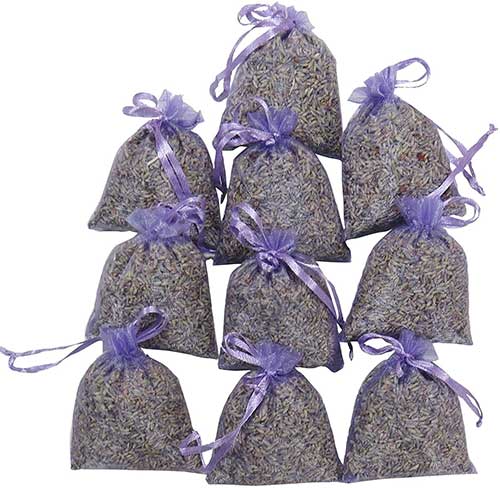
These potent lavender moth-deterring bags come in packs of 15. I doubt you will find a higher rated or more effective moth deterrent.
Instead of your closet smelling like toxic mothballs they could smell as lovely as a French garden in springtime. The seller points out that this fragrance is all-natural and no artificial ingredients have been added.
The Martha Method
The legendary lecturer of luxury living, Martha Stewart, has also chimed in on the best ways to protect clothing from moths. Martha is a big fan of using herbal sachets of patchouli, wormwood, and especially lavender. She also has a few recommendations on protecting garments against moths and their larvae.
If you notice an infestation, the first thing you’ll want to do is discard or treat any clothing that has been infested with eggs or larvae. Any clothing or fabrics that can be mended should be laundered or taken to the dry cleaner. Next, place these items in airtight plastic bags. Vacuum or squeeze out all the air and then place these in the freezer for at least 48 hours. Next, allow the items to warm up for a day, and then repeat the freezing process again. If there is any condensation built up in the bag, be sure to air out your items before storing them away, or toss in a few silica bags.
4. Dynatrap Moth and Insect Trap
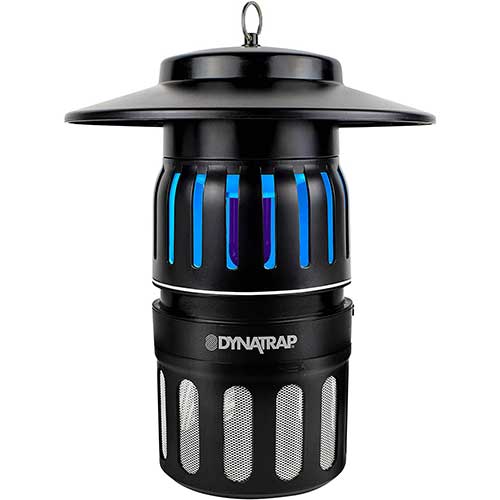
The Dynatrap can be used to catch months, mosquitos, biting flies, and other insects. This trap works up to 1/2 acre. There is a DynaTrap DT2000XL that can trap mouths and bugs up to 1 acre.
The bug catcher can be hung up or place on a table outside. It attracted bugs in three ways. The UV light attracted insects, A titanium dioxide coating producers CO2, and a vacuum fan brings insects into the trap.
5. CedarFresh Moth Repellents
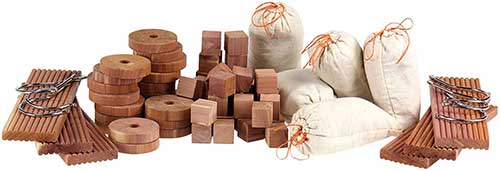
CedarFresh offers its Clothes Protector and moth repellent storage accessories value pack to make moths think twice before laying eggs in your closet or storage spaces. Plus, that wonderful cedar smell!
Cedar oils only kill moth larvae, not adult moths. And, you will have to order a fresh batch once the scent wears off. But, you can renew that freshly cut cedar smell by sanding down the wood pieces or applying some cedar essential oils. This cedar product can also help to clear the house of centipedes and other insects.
Protecting Apple Orchards from Codling Moth
Whether you have an entire orchard or a single apple tree on your property, you may already be familiar with the codling moth (Cydia pomonella) and its devastating effects. The larvae/caterpillars of the codling moth are known for their destructive capabilities in apple orchards, but this species can also be problematic for growers of stone fruits, pears, and walnuts.
Like most species of moth, the codling moth can be extremely difficult to eliminate, especially if their numbers have built up over several seasons.
The larvae of the codling moth have a cream or pinkish color body color, but with a brown-hued head. Codling moth larvae use their strong heads to burrow into fruit. As they forage through, they excrete feces known as “frass,” essentially making the fruit not safe to consume.
There are some effective methods to control codling moth populations.
6. All Seasons Insect Spray
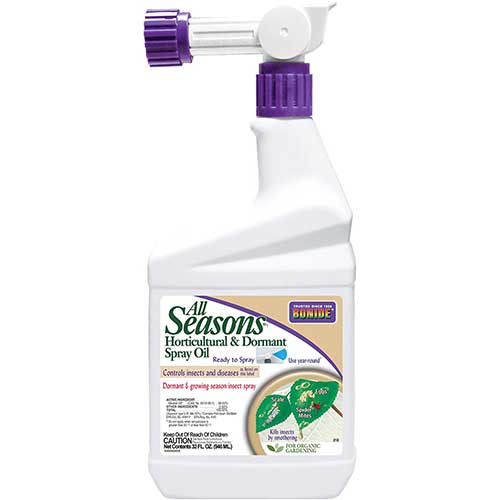
All Seasons Oil is a mineral oil spray that can be used to control insects and diseases. In the early spring, scrape off loose bark from your apple trees. This will help remove many of the larvae cocoons that have taken up residence over the winter. Next, kill off any remaining eggs by spraying a solution such as the All Seasons Horticultural Oil.
You can also try a cardboard banding approach which gives the larvae an artificial area to cocoon. You can then remove and destroy these bands in the springtime.
7. BioLogic Natural Nematodes Insect Spray
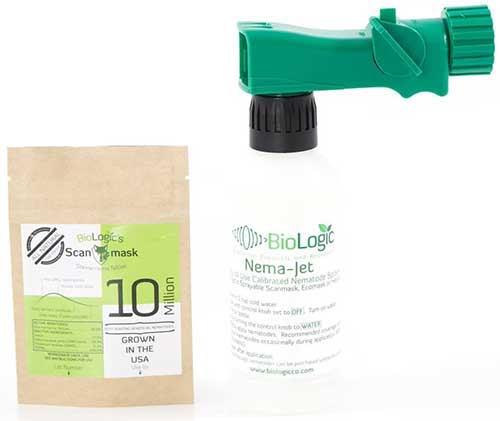
Nematodes are also helpful in killing off newly hatched codling moth larvae. These microscopic parasites are available in spray-on formulas which you can apply to trunks, branches, and the surrounding soil. One spray-on product, the BioLogic Scanmask Beneficial Nematodes Steinernema, has earned high praise from reviewers and promises to include at least 10 million Steinernema feltiae nematodes within every bottle.
There are some nonchemical and chemical methods you can use to control codling moth populations. Some apple growers use pheromone traps to determine when codling moth are most active, then release microscopic Trichogramma platneri wasps to attack the eggs and young larvae.
Species of Moths
Amazingly, there are nearly 10 times as many moth species as there are species of butterfly — 160,000 species compared to butterflies’ meager 17,500. It’s almost as if nature gave the moth 160,000 tries at not being an annoying pest. And, it failed each and every time. We’re not going to cover each and every species of moth in this article.
But, we will touch on some of the more common species of moth, and especially the varieties you need to shield your house from. For the sake of our purposes, we are going to group moths into three groups based on how they are a threat to humans. Therefore, we will lump a number of moth species into “clothing moths,” “food moths,” and “carpet moths.” We will also feature a moth with an interesting history and one that’s particularly destructive to North American forestry, the gypsy moth.
The Most Destructive Species of Moth
They wreck your finances and your favorite sweater. Moth larvae are capable of destroying all matter of goods. If it has any kind of fiber in it, the larvae will seek it out and leave it chock full of holes. Fabrics, carpets, tapestries, clothing, crops — nothing is spared from these voracious fiber foragers.
In this section, we’re going to take you on a journey to explore some of the most notorious and destructive species of moth. Far from being just an annoyance, these species of moth larvae can truly cause quite a bit of damage
Clothing Moths
The common clothes moth and the brown house mouth are two moth species that you are probably very familiar with — you just don’t know it yet.
If there are any common clothes moths reading this article, we’d like to point out that by calling you “common” we mean this in the most insulting sense of the word. Now that that is out of the way, let’s dive into the common clothes moth (Tineola bisselliella).
To the casual observer, these moths will look like your everyday, run-of-the-mill brown moth. But, the dysfunctional species that they are, these moths prefer to scurry across floors and walls as opposed to flying. How common!
This is a wool-loving variety of moth. So, that favorite wool sweater you’ve tucked away in the attack through the summer? Kiss it goodbye. It’s moth larvae food now. Just remember: the clothing item doesn’t have to be stored away in an attic for these pests to forage on the fibers. They are equal opportunity destroyers of clothing items.
Of course, like many moth larvae, the common clothes moth will also indulge in fibrous food items such as grain and barley.
Brown House Moths
In North America, the most common moth is appropriately named “brown house moth” (Hofmannophila pseudospretella). While the larvae of the brown house moth will feed on clothing, wool, feathers, leather, and textiles, they typically only have one breeding cycle per year, so their destructive capabilities are somewhat limited.
This species is everywhere. So, not being proactive in protecting your stored clothing items and other fibrous materials will eventually catch up with you.
Carpet Moths
Like their clothing-munching relatives, the larvae of carpet moths are amazingly small. This means you may notice an issue with your carpet before you ever have a chance to catch the larvae in the act.
Case-Bearing Carpet Moths
While less numerous than their brown house moth counterparts, the case-bearing carpet moth (Tinea pellionella) larvae have a voracious appetite for wool, cotton, and other fabrics commonly used in carpeting. Most infestations of case-bearing carpet moths start with an imported piece of fabric. Even a store-bought rug can be infested with eggs.
The larva of this moth species is creamy white in appearance. Adult case-bearing carpet moths have a sandy or salt-and-pepper coloration on the wings.
This species has a universal distribution and can be found in nearly every town and city throughout the world. Adult case-bearing carpet moths typically emerge during the late summer or autumn months. These moths earn their name from the protective cases they construct using hair, feathers, and other fibrous materials.
Pantry Moths (Food Moths)
The scourge of the pantry. Food moths can easily ruin a good supply of grain and other fiber-rich foods.
Tomato Hornworm Moth
If you’ve ever tried to grow a tomato garden, chances are you’ve stumbled upon the tomato hornworm moth (Manduca quinquemaculata). You may not have seen them, but if you had decayed tomatoes and munch-on tomato leaves, then you likely had hornworm moths in your tomato garden.
This moth species earns its nickname from its caterpillar form, which features a bright orange- or auburn-colored “horn” on its posterior. Along the length of its sides are also dark circles which have all the appearances of eyes, but are really just a clever way of deterring potential predators. While the tomato hornworm moth caterpillar has a lime-green coloration, they can also take on a brownish hue later on in the season. Some varieties have white and black banding running perpendicular to each faux eye.
While they are notorious for feasting on tomatoes, the tomato hornworm moth also extends its palate to potatoes, peppers, eggplant, and other crops. The tomato hornworm moth caterpillar has a voracious appetite and will eat non-stop until it is ready to transform into a pupa and then into an adult moth.
How to spot them: Adult moths will usually lay their eggs around late spring, typically on the underside of leaves. It really takes a keen eye to spot the eggs, which are green in color and usually seen in clumps. (Just picture a dollop of wasabi and you’ll know what to look for.)
Indianmeal Moth
Despite its name, the Indianmeal moth (Plodia interpunctella) did not originate in India, but it can now be found on every continent excluding Antarctica.
The larvae of the Indianmeal primarily feed on food items located in pantries and pantries. Some of their favorite food items include accessible bags of flour, oats, and muesli. If you accidentally eat an Indianmeal moth there is a little comfort in knowing that they are non-toxic and do not carry any known diseases. But, ingesting the larvae can cause diarrhea and irritate your intestines. Just the thought of accidentally biting into a moth larva should have you reconsidering how you store your foods.
Like all moth species, the larvae are small and hard to detect. Adult Indianmeal moths are nearly a half-inch (1cm) in length. These are actually easy to differentiate from the more common types of house moths since their wings have two colors: cream and brown.
The Gypsy Moth and its Threat to American Forestry
The gypsy moth (Lymantria dispar) has caused untold damage to North America’s forests ever since its accidental introduction to the United States sometime in the late 1860s. And, by saying “accidental introduction,” we have to point out that the species was brought over to the United States intentionally (more on that later).
While the gypsy moth has lived in Europe and Asia for millions of years, these regions of the world also have many bird species which prey on gypsy moths — not so in the United States. Without an effective predator, gypsy moth populations have exploded, putting hundreds of forestry species at risk, especially several species of aspen and oak. The gypsy moth has found its way into most parts of the contiguous United States, but its greatest concentrations are in the Great Lakes states, Appalachia, and the Ozarks.
As we’ve previously pointed out in this article, moth larvae (“caterpillars”) have a voracious appetite and moths are exceptionally successful at procreating. These two factors combined can lead to entire tree stands being stripped of foliage, putting whole forests at risk.
Gypsy Moth History
The amazing thing about the gypsy moth outbreak is how it could have been avoided in the first place.
Leopold Trouvelot was an amateur entomologist that came to the United States following Napoleon Bonaparte’s coup on France. After settling in the Boston area, Trouvelot took a keen interest in silk moths and was researching the potential to use these to produce silk for textiles. While gypsy moths do not produce usable quantities of silk, for whatever reason, he decided to bring samples back to the United States after a visit to Europe sometime around the 1860s. Trouvelot was raising a population of gypsy moths in a forested area near his home when a few of the larvae escaped.
There are mixed reports as to what Trouvelot did after discovering that his samples had wandered off; some say he did nothing, others say he tried in vain to get federal and local leaders involved in eradicating the wayward larvae. But, the United States had just ended its bloody Civil War and were more focused on restoring the Union, so hobbling through forests, looking for moth larvae was not high on their list of priorities.
After a decade of the gypsy moth larvae’s escape, the government could no longer ignore the destruction and the State of Massachusetts began a gypsy moth eradication program.
Gypsy Moth in Massachusetts
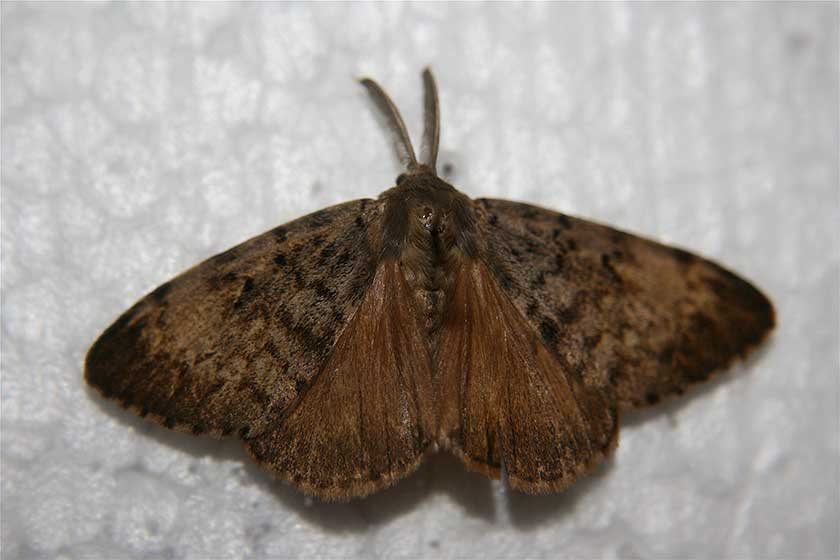
There was an early attempt at gypsy moth control in Massachusetts.
Fortunately, after this incident, Trouvelot lost interest in entomology and turned his amateur interests to astrology. In addition to his 7,000-plus astronomical illustrations, Trouvelot was also credited with discovering sunspots.
The difficulty in controlling gypsy moths is the unpredictability of their populations. In areas once thought under control, sudden population explosions can occur, then disappear seemingly on a whim. Even in certain parts of Massachusetts thought clear of gypsy moths, populations can reappear and wipe out whole sections of forest in a single season.
Today, researchers are optimistic that in the areas left barren, more larvae-resistant species of oak and aspen will take root.
What Kind of Fabrics Do Moths Eat?
To get technical, it’s not actually moths that feed on fabrics, but moth larvae. Of course, this is no consolation to you if you find a cherished wool coat chock full of holes.
Moth larvae can actually feed on just about any type of natural fiber, including some non-fiber items. Larvae can survive on items such as:
- Wool
- Cotton
- Pet fur
- Dust
- Lint
- Feathers
- Hair
- Carpeting
- Brush bristles
- …and much more
Here’s an interesting fact: Adult moths don’t even have mouths — only a proboscis to suck nectar from flowers. Instead of wasting all that time and energy to find food, they go about procreating until they ultimately die. So, when you see moths fluttering about your floodlights, what they are really doing is meeting potential mates and have a big, old Roman-style party.
What’s really weird about adult male moths is that they can smell a female moth up to seven miles away — possibly more if the wind is blowing just right.
As we’ve already established, moths are weird. So, of course, they can’t smell in the traditional sense (they lack noses). Moths instead use their antennae to “sniff out” potential mates. And, since they are not nosing around for food, these pheromone-catching antennae are used almost exclusively for picking up the ladies.
Why Do Moth Larvae Eat Clothing and Other Fabrics?
Like all living creatures, moth larvae need proteins in order to survive. In humans, we use proteins to create muscle, hair, body tissue, collagen, and other parts of human anatomy. The same is true with moth larvae. Moth larvae convert the keratin found in wool, lint, feathers, fur, and other keratin-containing fiber into nutrient-rich protein. And, they have to eat enough of the stuff so they can survive a mouthless existence into adulthood.
Mothballs: Fatal to Moths… and Sometimes to Humans
While mothballs are deadly to moths and moth larvae, they are also highly toxic to humans. In fact, naphthalene-based mothballs have already been banned by several countries. Mothballs go from being a solid directly into an unstable gas. This is a problem. The various types of dichlorobenzene that now comprise moth mothball formulations are suspected carcinogens (beyond being flammable). Multiple deaths of babies and toddlers have been reported due to accidental exposure to these mothball varieties.
To be effective, mothballs need to be used in airtight garment bags made from polypropylene or polyethylene — the two types of plastic do not cause hazardous reactions.
Mothballs and People with G6PD Deficiency
G6PD deficiency is a rare genetic condition that causes red blood cells to prematurely destruct when in the presence of naphthalene. When naphthalene is inhaled by an individual with a G6PD deficiency, it can quickly lead to brain damage or death, especially in babies and infants. But, even the alternatives to naphthalene — paradichlorobenzene — come with their own health risks. The World Health Organization has labeled paradichlorobenzene a possible carcinogen and exposure to this chemical can lead to a range of health issues, such as dizziness, headache, nausea, diarrhea, and shortness of breath.
Fortunately, many countries have now banned naphthalene-containing mothballs and other products. But, many households likely still have packages of naphthalene-formulated mothballs in their cupboards.
With the health risks of mothballs, many ask whether there is a safer alternative. And, we are happy to report that there are safe alternatives to these toxic pesticides.
Six Ways to Prevent Moth Infestations
When dealing with pests, it’s always easier and more effective to prevent an infestation than to do battle with critters that have already set up shop in your home. In this section, we will go over some of the best preventative measures you can take to prevent moth infestations.
While we can’t guarantee these tips will work in every instance, these tactics have worked for many in the past. If you try these tips and find yourself in a losing battle, it may be in your best interest to hire a professional pest control company to eliminate moths and moth larvae on your property.
1. Dust Regularly
If you find dusting to be a task reserved for those with too much time on their hands then you’ll want to pay attention. Unsurprisingly, many moth species are fond of dust. After all, dust is a fiber that moths can use as a food source. So, one of the best ways to make your home unattractive to moths is to keep it clean.
2. Clean Your Wardrobe Regularly
If you have a lot of unused clothing items, you should go through your wardrobe and clean them from time to time. You should also keep any clothes that you don’t plan on wearing for the season in airtight, vacuum-sealed bags. Instead of using mothballs, you can try some natural moth larvae deterrents such as oil of lavender or patchouli. Cedar balls and hanger tags are somewhat effective against moth larvae, but these should never be used as your first line of defense.
3. Vacuum Frequently
Apart from the natural fibers found within carpets and rugs, moths can also feast on any leaf debris or dust found within carpet fibers. While most vacuums are strong enough to sweep up moth larvae, you may also want to consider hiring a professional carpet cleaning company.
4. Dry Clean Your Clothes Before Storing
One of the most effective ways to kill moth eggs and larvae is to dry clean your clothes before you place them in airtight garment bags. This is especially true for garments with natural fibers such as fur, silk, felt, cotton, and wool. Moths prefer to lay eggs on fibrous materials in dark spaces, which is why the most common infestations occur in basements and attics. But, even your daily-use closet is susceptible to an infestation.
5. Check Your Home’s Exterior
You see your home’s exterior every day. This makes it difficult to pinpoint areas where pests could easily gain entry into your home. As you go around your home’s exterior, you have to look at it the same way a pest control profession would, but looking for small cracks in the foundation, loose siding, or a small tear in your window screen. Also, you may want to consider adding screen mesh to your soffit and crawlspace vents.
6. Switch to Motion-Sensing Entry Lights
Moths, as you know, are famous for having all-night parties around exterior lights. If you keep an exterior light on to make it easy to see entry doors when you come home at night, consider switching to motion-sensing lights. This way it will be less likely that moths will follow you into your home.
Related Article: 10 Best Bug Zappers
Should We Care About Moths? Yes!
In this article, we’ve been pretty hard-nosed when it comes to many species of moth.
But, could it be that there is a purpose for moths in the world? Yes, moths are an annoyance and cause untold millions — possibly billions — of dollars’ worth of crop damage each year. But, could it be that they do serve some purpose, ecologically speaking?
Beyond all their negative attributes (which there are many), moths are helpful for nighttime plant pollination and serve a number of ecological roles. Clearwing moths and hummingbird hawk moths help to pollinate flowers such as a dense blazing star (Liatris spicata) and the dense blazing star (Liatris spicata). In addition to being a favorite food of bats, many garden birds also rely on moths as a food source.
They can be amazingly beautiful, too. Certain species of moth (cecropia moth, luna moth, garden tiger moth, and giant leopard moth) rival the beauty and mystique of the most celebrated butterflies.
Declining populations of moth in the United Kingdom have many environmentalists on high alert. Experts fear that the extinction of several moth species will also lead to the extinction of some flowering plants and also several bird species.
It’s one thing to take issue with moths that invade our homes and cause damage to textiles and carpets. But, we also have to remember that we are all just sharing this planet. As the dominant species, we have to take steps to manage it responsibly — moths and all.
Related Article: How to Get Rid of No-See-Ums
My name is Blane and I’m a life-long resident of Southeastern Louisiana. I’ve been working as Pest Control Technician and Inspector for about 1.5 years now.
I’ve worked in many other industries as well, including consulting, managing, as well as at the ground level in fields including Food Service, Corporate Automotive sales, and finance. Whether it be providing counsel, content, or hands-on support; my goal remains to add value to the lives of the people I serve.
If you have any questions regarding pest control, leave them below. I would be happy to help you out in any way I can.
